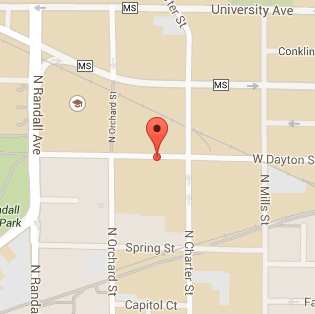The rock record continually stimulates ideas about Earth processes. The ability to quantify the rates of these processes and to rigorously test specific cause-effect relationships requires a time scale. Hence, advances in geochronology — the science of using isotopes to determine the age of Earth materials — have led to many of the transformative ideas and discoveries in the geosciences. The modern variant of the K-Ar clock, the 40Ar/39Ar method, is among the most powerful and widely used chronometers.
The WiscAr Laboratory is a state-of-the-art 40Ar/39Ar dating facility capable of addressing questions spanning the entirety of Earth history. 40Ar/39Ar dating can be applied to a wide range of problems in volcanology, igneous petrology, metamorphic petrology, structural geology and tectonics, paleobiology and climate change in deep time, and refining geomagnetic time scales.
WiscAr infrastructure includes two fully-automated mass spectrometers for incremental heating or laser fusion analyses, rock preparation and mineral separation facilities, optical microscopes, and a scanning electron microscope and electron microprobe in the Department of Geoscience. Techniques are continually refined to provide the precise geochronology needed for each project. Details about laboratory construction and facilities can be found under Infrastructure.
The goal of our research program is to broadly train students for careers that will impact the future of Earth Sciences. Visit the WiscAr Personnel page for profiles of our staff and students.
Questions regarding WiscAr’s capabilities and services can be referred to Dr. Brad Singer or Dr. Brian Jicha.
![[UW-Madison Crest]](https://geochronology.geoscience.wisc.edu/wp-content/themes/uw-wiscar2015/library/images/uw-crest.png)
![[WiscAr Logo]](https://geochronology.geoscience.wisc.edu/wp-content/themes/uw-wiscar2015/library/images/wiscar-logo.png)

![[Photo]](https://geochronology.geoscience.wisc.edu/wp-content/themes/uw-wiscar2015/library/images/home-slides/mass-spec-panorama.jpg)
![[Photo]](https://geochronology.geoscience.wisc.edu/wp-content/themes/uw-wiscar2015/library/images/home-slides/picking-scope-salsabila.jpg)
![[Photo]](https://geochronology.geoscience.wisc.edu/wp-content/themes/uw-wiscar2015/library/images/home-slides/groundmass-samples-in-planchette-noblesse.jpg)
![[Photo]](https://geochronology.geoscience.wisc.edu/wp-content/themes/uw-wiscar2015/library/images/home-slides/salsabila-on-sem.jpg)
![[Photo]](https://geochronology.geoscience.wisc.edu/wp-content/themes/uw-wiscar2015/library/images/home-slides/noblessse-line-alan-schaen.jpg)
![[Photo]](https://geochronology.geoscience.wisc.edu/wp-content/themes/uw-wiscar2015/library/images/home-slides/frantz-chase-kresl.jpg)
![[Photo]](https://geochronology.geoscience.wisc.edu/wp-content/themes/uw-wiscar2015/library/images/home-slides/sharon-mullen-with-clay-disaggregator.jpg)
![[Photo]](https://geochronology.geoscience.wisc.edu/wp-content/themes/uw-wiscar2015/library/images/home-slides/earthcube-workshop.jpg)
![[Photo]](https://geochronology.geoscience.wisc.edu/wp-content/themes/uw-wiscar2015/library/images/home-slides/research-laguna-del-maule.jpg)
![[Photo]](https://geochronology.geoscience.wisc.edu/wp-content/themes/uw-wiscar2015/library/images/home-slides/pueblo-park-gssp-group.jpg)